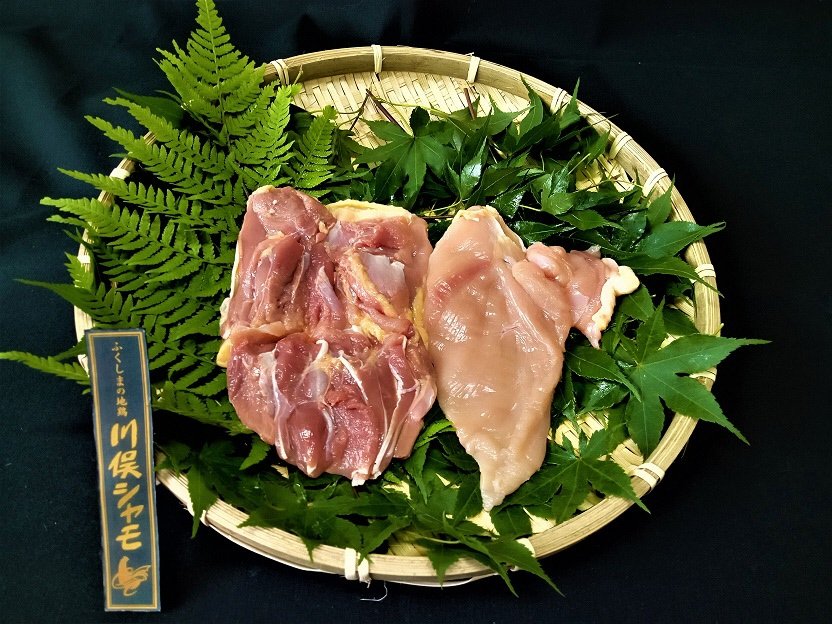Kawamata Shamo
| Registration Number | 118 |
|---|---|
| Name of the GI | Kawamata Shamo |
| Class | Meat |
| Date of Protection | 2022/03/31 |
| Producing Area |
Fukushima Prefecture
Kawamata Town, Date District |
| Applicant - Name and Address | Kawamata Shamo Shinkokai (Kawamata Shamo Promotion Group) 30, Gohyakuda, Kawamata Town, Date District, Fukushima Prefecture |
Producing Area
"Kawamata Shamo" is meat of a jidori (homebred chicken). It is characterized by having high content of crude fat and low water content and is thus fatty and tasty. Among fatty acids, the composition ratio of oleic acid is high.
Compared to general chicken meat produced in Japan, the price is about 5 times higher. It is sold at a price similar to that of other famous jidori brands.
Chicks of "Kawamata Shamo" are produced by breeding hens of Rhode Island Red and breeding cock produced by mating cocks and hens of large game fowl that are made by breeding a game fowl hen and a Red Cornish cock.
Chicks hatched in Kawamata Town are raised in especially designated chicken coops until the age of 28 days. After the 28th day, the chickens are grown on floor level in chicken coops for grown chickens at a density of up to 7 chickens per square meter until the age of at least 80 days.
To cope with summer heat, the chicken coops have metal chicken wire on both sides so that ventilation is ensured and no special temperature regulation is necessary. In winter, the windows are covered with openable plastic sheets, and boxes are placed where chicks can warm themselves only during the early ages when they are relatively weak against cold temperatures.
For feed, those that are especially formulated for "Kawamata Shamo" are used depending on age. Until the age of about 35 days, special feed consisting of corn, which is the main ingredient, plus vegetable oil cake and fish meal, etc. is given. From the 36th day on, feed containing increased ratio of corn and less oil composition is used to produce the strong umami, which is a characteristic of shamo (fighting fowl) meat.
The production area is on highlands of at least 200m in elevation. Winds blow down from Abukuma Mountains (1) even during summer, making the area appropriate for growing chickens, which are weak against heat. During the Edo Period (2), weavers who made fortunes in silk fabric grew fighting fowls for pleasure and enjoyed cockfighting. Raising fighting fowls spread widely in the town, and fowls were also used for food.
In 1985, Niku Shamo Kenkyukai (Meat Shamo Study Group) was established by local persons concerned and started breeding. In July 1987, sales of "Kawamata Shamo" started. Breeding continued to further improve taste, and the current breeding style was established in 2008.
As of 2019, there are 13 producers, raising up to 80,000 chickens in recent years.
- Abukuma Mountains extend from the southern part of Miyagi Prefecture to the northern part of Ibaraki Prefecture, stretching more than 170km from north to south and consisting of mountains of over 800m in elevation. The highest peak is Mt. Otakine (1192m). The spindle-shaped mountain area is relatively gently sloping and surrounded by the Abukuma and Kuji Rivers and the Pacific Ocean.
- The Edo Period: 1603-1867. It is a period of Japanese history characterized by the establishment of a shogunate (feudal military government) in Edo (now Tokyo). Political administration under the Tokugawa clan began when Tokugawa Ieyasu became the era's first shogun.


